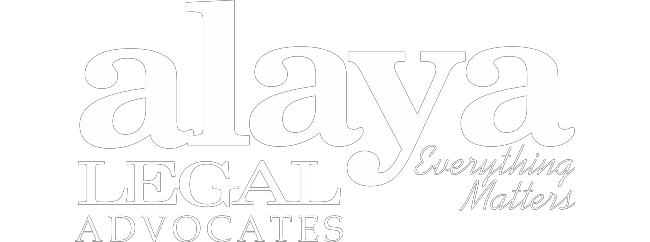NATURAL GAS:
INFORMATION AND UPDATES
Alaya Legal introduces its Natural Gas: Information and Updates, with a view to present in a systematic, organized and comprehensive manner, the developments in the natural gas segment across the globe and the Republic of India, which is intended to serve as a canvas for understanding various legal developments in this
segment. ‘Natural gas’is a natural reserve and present all around the world. It is extracted in most of the countries and in today’s world, a country’s revenues and ‘gross domestic product (GDP) heavily depend upon it.
Various countries across the globe have been grouped into categories depending on the
quantum of proven ‘natural gas’ reserves present in such countries.
The endeavour is to cover developments in ‘very concentration areas’ and major developments in all other areas. Developments in the Republic of India are covered separately.
ZONING

The aforesaid map represents the global scenario of the proven Natural Gas Reserves. Natural gas reserves in the world have been divided into the following four categories: ▪ Very High Concentration (above 100,000,000,000cu-m)
▪ High Concentration (above 10,000,000,000cu-m)
▪ Medium Concentration (above 1,000,000,000cu-m) ▪ Low Concentration (0- 1,000,000cu-m)
Very High Concentration Areas are Canada, Qatar, USA, Russia, Norway and Iran.
The picture will be incomplete without a mention of the reserve holders of shale gas basins.

GLOBAL SCENARIO
Statistics
Canada. Canada is the world’s third-largest producer of dry natural gas and the source of most U.S. natural gas imports.Despite holding a relatively small share of the world’s proven natural gas reserves, Canada ranks third in dry natural gas production. It is the fourth-largest exporter of natural gas, behind Russia, Norway, and Qatar. Though Canada has plans to export liquefied natural gas (LNG), all of Canada’s current natural gas exports are sent to U.S. markets via pipeline. The proportion of Canada’s natural gas production that is devoted to meeting domestic requirements has risen in recent years, while net exports to the United States have fallen. The estimated production of natural gas was 160.1 billion cu m while the consumption was 103.3 billion cu m.
Qatar. Qatar holds the world’s third largest natural gas reserves and is the single largest supplier of liquefied natural gas.Qatar is wholly dependent on oil and natural gas for all of its primary energy consumption. Qatar’s proven natural gas reserves stood at approximately 896 trillion cubic feet (Tcf) as of January 1, 2012. Qatar holds almost 14 percent of total world natural gas reserves and is the third-largest in the world behind Russia and Iran.
USA. Proved reserves of U.S. oil and natural gas in 2010 rose by the highest amounts ever recorded since the U.S. Energy Information Administration (EIA) began publishing proved reserves estimates in 1977.While proved reserves of natural gas began increasing moderately in the late 1990s, it was not until the mid-2000s that volumes grew dramatically, in step with intensifying horizontal drilling programs. More recently, tight oil developments have contributed to the reversal of more than two decades of generally declining U.S. proved oil reserves. Proved reserves of crude oil and lease condensate rose 13 percent to 25.2 billion barrels in 2010, marking the largest annual increase since 1977 and the highest total level since 1991. In 2011 the estimated gas production was 651.3 billion cu m, while the consumption was 689. 9 billion cu m. Russia. Russia holds the largest natural gas reserves in the world, and is the largest producer and exporter of dry natural gas.Russia exports significant amounts of natural gas to customers in the Commonwealth of Independent States (CIS) – about 35 percent of total exports. In addition, Gazprom (through its subsidiary Gazexport) has shifted much of its natural gas exports to serve the rising demand in countries of the EU, as well as Turkey, Japan, and other Asian countries.
Norway. Norway is the second largest exporter of natural gas after Russia, and ranks fourth in world natural gas production.Norway had 71 trillion cubic feet (Tcf) of proven natural gas reserves as of January 2012. Despite the maturation of its major natural gas fields in the North Sea, Norway has been able to sustain annual increases in total natural gas production by continuing to develop new fields.Norway produced 3.64 Tcf of dry natural gas in 2011, down slightly from the 3.76 Tcf produced in 2010. Norway exported an estimated 3.5 Tcf of natural gas in 2011, 96 percent of its production, according to Norwegian Petroleum Directorate (NPD). Most of it was transported to Europe via its extensive export pipeline infrastructure and a smaller amount (4.3 percent) via LNG tanker.
Iran.Iran, a member of the Organization of the Petroleum Exporting Countries (OPEC), ranks among the world’s top four holders of both proven oil and natural gas reserves.Iran has the world’s second largest natural gas reserves but the sector is under-developed and used mostly to meet domestic demand. Natural gas accounts for 54 percent of Iran’s total domestic energy consumption. Most of the remainder of energy consumption is attributable to oil, with marginal contributions from coal and hydropower. Iran is expected to increase natural gas production from its offshore South Pars natural gas field in the Persian Gulf, an integral component of energy sector expansion plans.As of January 2012, Iran’s estimated proven natural gas reserves stood at 1,046 trillion cubic feet (Tcf), second only to Russia. Over two-thirds of Iranian natural gas reserves are located in non-associated fields, and have not been developed. Major natural gas fields include: South and North Pars, Kish, and Kangan-Nar. In 2010, Iran produced an estimated 5.2 Tcf of dry natural gas and consumed an estimated 5.1 Tcf. Natural gas consumption is expected to grow around 7 percent annually for the next decade.
Market Update
Canada Natural Gas imports Increase, US imports decrease. Canadian natural gas is the prime source of natural gas in USA. However, since 2001 the import of natural gas from Canada into the US is decreasing. Net imports of natural gas from Canada have been falling for years. Rising shale gas production in the United States, especially in the Northeast, is the key among several factors affecting this trend. For the first eight months in 2012, net imports from Canada fell by about 7%, to 5.7 billion cubic feet per day (Bcfd), from the same period in 2011. This resulted from high levels of US natural gas production coupled with record-high inventory in underground natural gas storage. United States net imports for 2012 year-to-date accounted for around 8% of US total natural gas consumption, the lowest level since 1992 as stated by EIA. Overall, US exports to Canada have been growing significantly since 2000. Nearly all natural gas exports to Canada were delivered from the Midwest.Natural gas exports from the Midwest to Canada reached a record-high level in 2011, totalling 2.4 Bcfd, and have decreased slightly in 2012. The US exports only a small volume of gas to Canada from the West and Northeast. However, natural gas exports from the US Northeast to Canada have been rising since the beginning of 2011.
USA- Net exporter of Natural gas by 2020. U.S Energy Information Administration
has released the early release version of the Annual Energy Outlook 2013 (AEO2013). According to the AEO2013, U.S production and exports of natural/shale gas will increase. “Cumulative production of dry natural gas from 2011 through 2035 in the AEO2013 Reference case is about 8 percent higher than in AEO2012, primarily reflecting continued increases in shale gas production that result from the dual application of horizontal drilling and hydraulic fracturing.Cumulative production levels for tight gas and coalbed methane exceed those in the AEO2012Reference case through 2035 by 3 percent and make material contributions to the overall increase in production. Lower 48 offshore natural gas production fluctuates between 1.8 and 2.8 trillion cubic feet per year, about the same as in AEO2012. New, larger-volume development projects, particularly in the deepwater Gulf of Mexico, remain directed principally toward liquids rather than natural gas.”
According to the AEO2013, US shall become a net exporter LNG in 2016 and an overall net
exporter of natural gas in 2020. “U.S. exports of LNG from new liquefaction capacity are assumed to start at a level of 0.6 billion cubic feet per day in 2016 and increase to 4.5 billion cubic feet per day in 2027, as peak export volumes are shipped out of facilities in the Gulf Coast and Alaska. Over the projection period, cumulative net pipeline imports of natural gas from Canada and Mexico in theAEO2013 Reference case are considerably lower than those projected in the AEO2012 Reference case, with the US becoming a net pipeline exporter of natural gas in 2021, or three years earlier than in AEO2012.” Also as per the report,the net imports from Canada are falling steadily and the net exports to Gulf of Mexico are to grow by 387 percent.
Russia’s Gazprom $ 4 Billion refund to European clients
Russia’s energy giant Gazprom has reported its half year figures which include a $ 4 billion (3.1 billion euro) refund to the European clients. Due to the refund their net profit has halved. European clients have been provided to be the biggest market for Russia. The European Commission (EC) is investigating claims that Gazprom was hindering the free flow of gas across the EU and imposing unfair cost by linking gas to oil prices. In September the ECstarted a formal inquiry into allegations of anti-competitive behaviour by Gazprom, in violation of anti-trust rules. Much of the refund went to Germany.
Norway Statoil and Germany Wintershall supply deal
Norway’s Statoil has agreed a major supply deal with German producer and supplier Wintershall.The 10-year contract, starting from January 01, 2013, will provide for a total of 45 billion cubic metres (bcm).Statoil will make the North Sea gas available to Wintershall at trading points in Europe, mainly Germany. Germany, the second biggest gas market in Europe, consumes about 80 bcm natural gas per year. Iran to earn $400 Billion from gas field
Iran’s South Pars and other shared gas fields
will generate an annual income of $400 billion for the country after completion, as announced by Iran’s Oil Minister Rostam Qasemi.770 million cubic meters of gas can be extracted
from South Pars field after the completion of all of its phase. With this amount of gas extraction from the world’s biggest shared gas field, Iran’s gas production will equal that of
Qatar’s. Iran’s Gas production achieves 120 bn cubic tons in the 2012
It is estimated that the Gas production in 2012 in Iran, has reached 120 bn cu tons. Iran which has world’s fourth largest oil reserves and second largest gas reserves has also 137.6 billion barrels of proven oil reserves, and 29.61 trillion cubic meters of proven gas reserves.
Qatar Exports Rises
There is a substantial increase in natural gas exports from Qatar as per the International Monetary Fund Report. The report further states that on aggregate for Middle East North Africa, Afghanistan, and Pakistan region (MENAP) hydrocarbon exporters, natural gas export volumes comprise about the one-fifth of hydrocarbon exports, but exceed crude oil export volumes in Qatar, Algeria and Yemen.
Bulgaria to Import Gas from Europe as of 2014 With the construction of the natural gas interconnectors between Serbia and Bulgaria, Bulgaria will have access to the gas deposits in Hungary and to European gas suppliers which will boost Bulgaria’s underdeveloped north western region. The gas pipeline is expected to start functioning in 2014.
Ukraine moves closer to $10 billion shale gas deal with Shell
Ukraine, which is Europe’s third largest shale gas reserves at 42 trillion cubic feet according to EIA got the approval for a planned production sharing agreement from local authorities in the eastern Donestk region.With this approval Ukraine moved a step forward to shale gas deal with Royal Dutch Shell.
Nord Stream will cost Gazprom more to export gas
Gazprom`s plans to transfer gas shipments from Ukraine to the Nord Stream pipeline have become surprisingly expensive. The price of moving gas through both Ukraine and Nord Stream has increased by 20 % in just first six months of 2012 and the volume of Russian gas going through Ukraine has decreased by 15% by the end of 2012.
REPUBLIC OF INDIA
Statistics
The Republic of India had approximately 38 trillion cubic feet (Tcf) of proven natural gas reserves as of January 2011. EIA estimates that India produced approximately 1.8 Tcf of natural gas in 2010, a 63 percent increase over 2008 production levels. The Natural Gas production in 2011 was 46.1 billion cu-m whereas the consumption was 61.1 billion cu-m.
Market Updates
Three Production Sharing Contracts signed under NELP-IX on 28 March 2012
Under the Ninth round of New Exploration Licensing Policy (NELP-IX), Government of India has signed 13 production sharing contracts for 2 shallow water blocks and 11 on land blocks which are in the states of Assam (2), Gujarat (6), Madhya Pradesh (2) and Rajasthan (1) and in the basins of Gujarat-Kutch (2), Assam-Arakan (2), Cambay (6), Rajasthan (1) and Vindhyan (2) on 28 March 2012.
RIL pitches for market-driven price for natural gas
Reliance Industries Limited (RIL) has announced that it has found very large gas reserves that need a price of more than $10 per million British thermal unit to be developed and produced. In its submission to the C Rangarajan Committee, for future contracts for exploration of oil and gas and for gas pricing, RIL asserted only market related prices can an incentive to help produce the vast domestic resources that either concentrated in small pools or are located in technologically challenging ultra deep sea.
India Shale Policy
The Ministry of State for Petroleum and Natural Gas has announced that the India Shale gas exploration policy which favours market-determined pricing of the fuels is under discussion and will be ready within a year. The government has identified six basins ‘Cambay, Assam-Arakan, Gondawana, KG onshore, Cauvery onshore and the Indo-Gangetic basins ‘ for carving out blocks to tap the unconventional fuel.
New Gas Findings
Malaysia
The State Owned Malaysian Company Petonas made two major gas discoveries which when combined could contain over 4 trillion cubic ft (tcf) at KuangNorth and Tukau Tamar Gas Field. Saudi Arabia
Saudi Arabia has announced the discovery of a gas field in the Red Sea, north of Dhuba Port in Tabuk.The gas production from the Tabuk region would start from Madyan field next year. Gas will be pumped through a pipeline to Dhuba Port and an electricity plant and a distribution network would be established in the industrial region of Dhuba.
Bangladesh
Bangladesh confirmed that it found nearly 1.0 trillion cubic feet (TCF) of additional natural gas at the country’s biggest field that will boost falling supply which has been slowing the economy.The countryfound the additional gas after completing the seismic survey at the biggest Titas gas field, more than 100 kms (63 miles) north east from Dhaka, with expert assistance from Russia and France. Titas gas field was discovered in 1962, and commercial production commenced in 1968. Gas seepage in the field is, however, a major concern that has been continuing unabated during the past several years.
Sources
Norwegian Petroleum Directorate
U.S Energy Information Administration
The International Energy Agency
Directorate General of Hydrocarbons, India
Online Publication of Natural Gas Asia & Europe,
Energy 365, National Iranian Gas Company and Economic Times
|
|||||||||||||||||
Disclaimer
The information in this private circulation is not legal advice and should not be treated as such. The information is taken from public domain and is purely for private and non- commercial purposes. We do not represent that the information is correct, accurate, complete or non- misleading. This disclaimer will be governed by and construed in accordance with laws of India, and any disputes relating to this disclaimer will be subject to the exclusive jurisdiction of the courts of the Republic of India. If you do not accept the terms of this Disclaimer or do not wish to receive this circulation, please reply to this email with ‘Do Not Send’.

























